When I walk into a room, one of the first things I notice is how it feels. Is it calm? Is it cluttered? One thing that always catches my eye is balance. Symmetrical balance, to be exact. It’s when both sides of a space look and feel even.
Think of a bed with the same nightstand and lamp on each side. It just works. It feels right. In this blog, I’ll show you how symmetrical balance can shape the way your home looks and feels. You don’t need to be a designer to use it.
With a few simple tips, you can make any room feel more pulled together. Symmetry brings peace, order, and beauty to a space. Let’s take a closer look at how it works and how you can use it in your own home. It’s easier than you think.
What Is Symmetrical Balance?
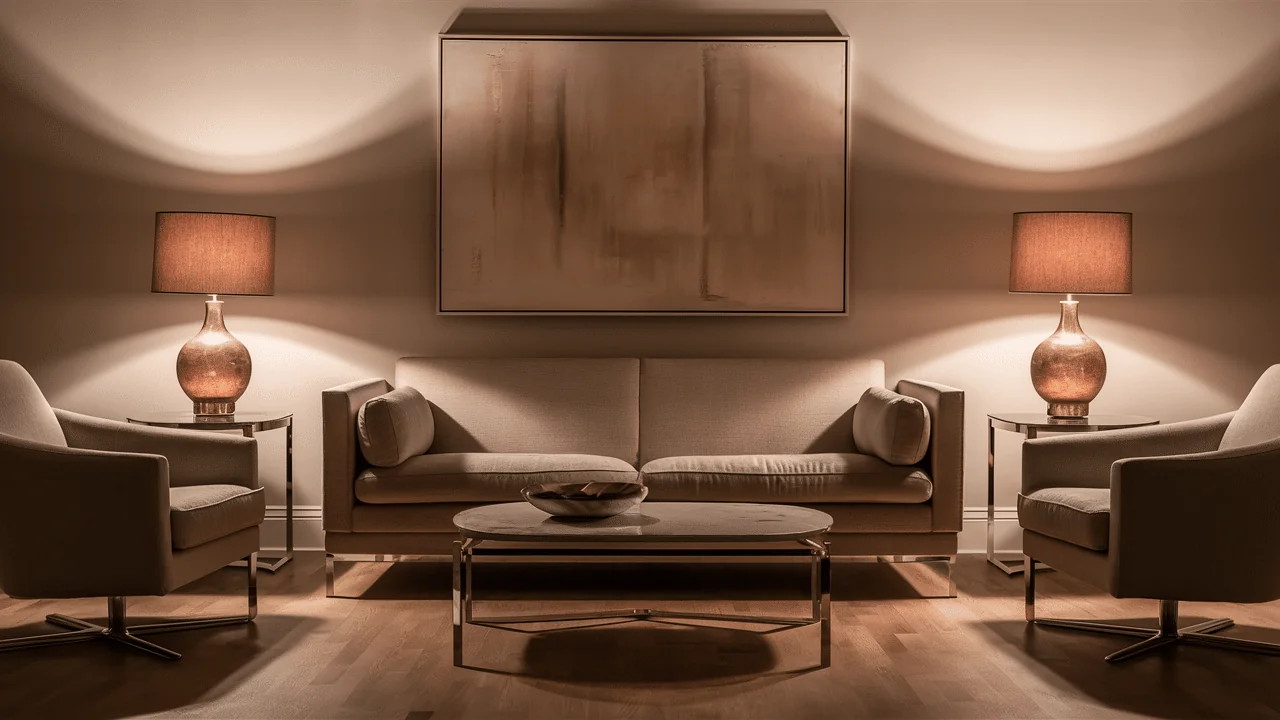
Symmetrical balance is when things on one side of a space match the stuff on the other side. It’s like a mirror. If you draw a line down the middle of the room, both sides look the same. This doesn’t mean every single thing has to match, but the feeling and weight of the items should be even.
Think of a room with a sofa in the middle and two chairs on each side, or a bed with the same table and lamp on each side. These are examples of symmetrical balance, which helps a space feel calm, neat, and organized.
Why Symmetry Matters in Design
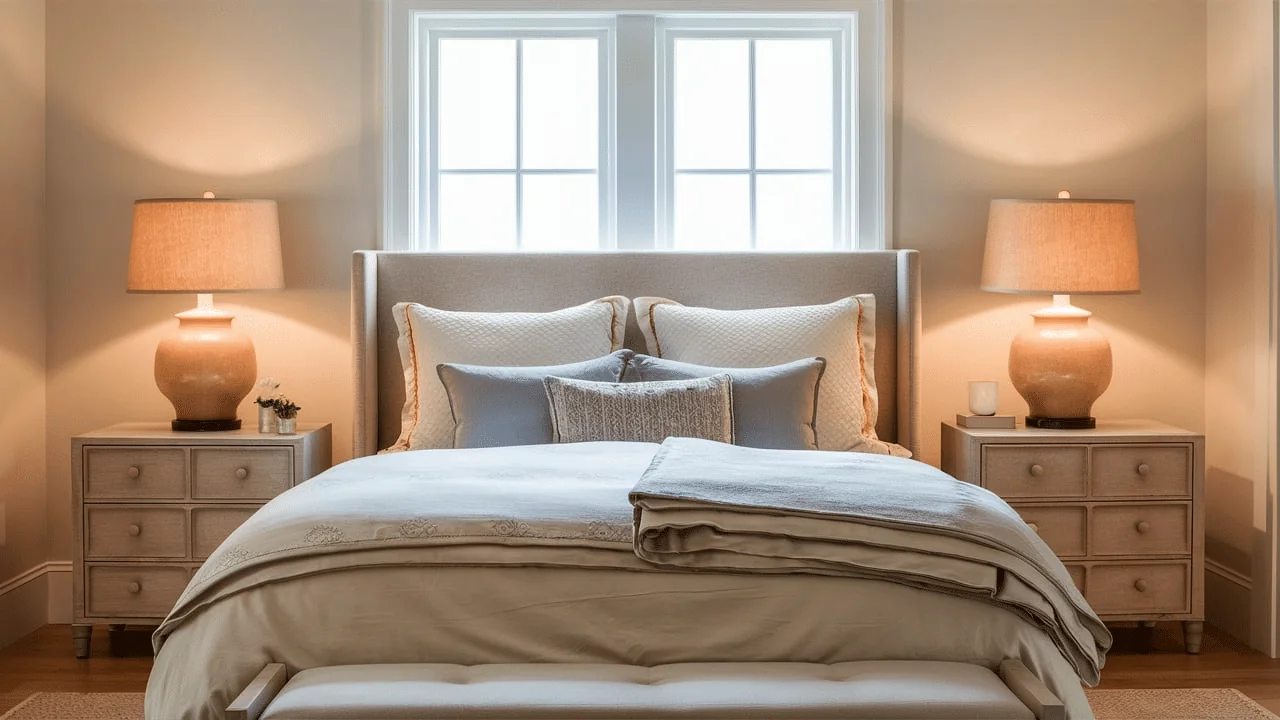
Symmetry makes a space feel safe and comfortable. Our eyes are like balance. When we see two sides that match, we feel peaceful. There is no guessing or confusion.
Designers often use symmetry to create a clean and classic look. Symmetry works in almost any room, from living rooms and bedrooms to kitchens and bathrooms. It’s also great for small spaces because it keeps things tidy and easy to follow.
The Three Types of Balance

There are three main types of balance in design: symmetrical, asymmetrical, and radial. Let’s examine how they differ.
1. Symmetrical Balance: This is where both sides are the same or very close. It’s the easiest to see and use. It works well in formal spaces.
2. Asymmetrical Balance: Here, the sides are different but still feel even. You might have a big item on one side and two smaller items on the other. They balance out by size or color, not by being exact matches.
3. Radial Balance: This is when items are arranged around a center point, like the spokes of a wheel. A round table with chairs around it is a good example.
How to Create Symmetrical Balance in Any Room
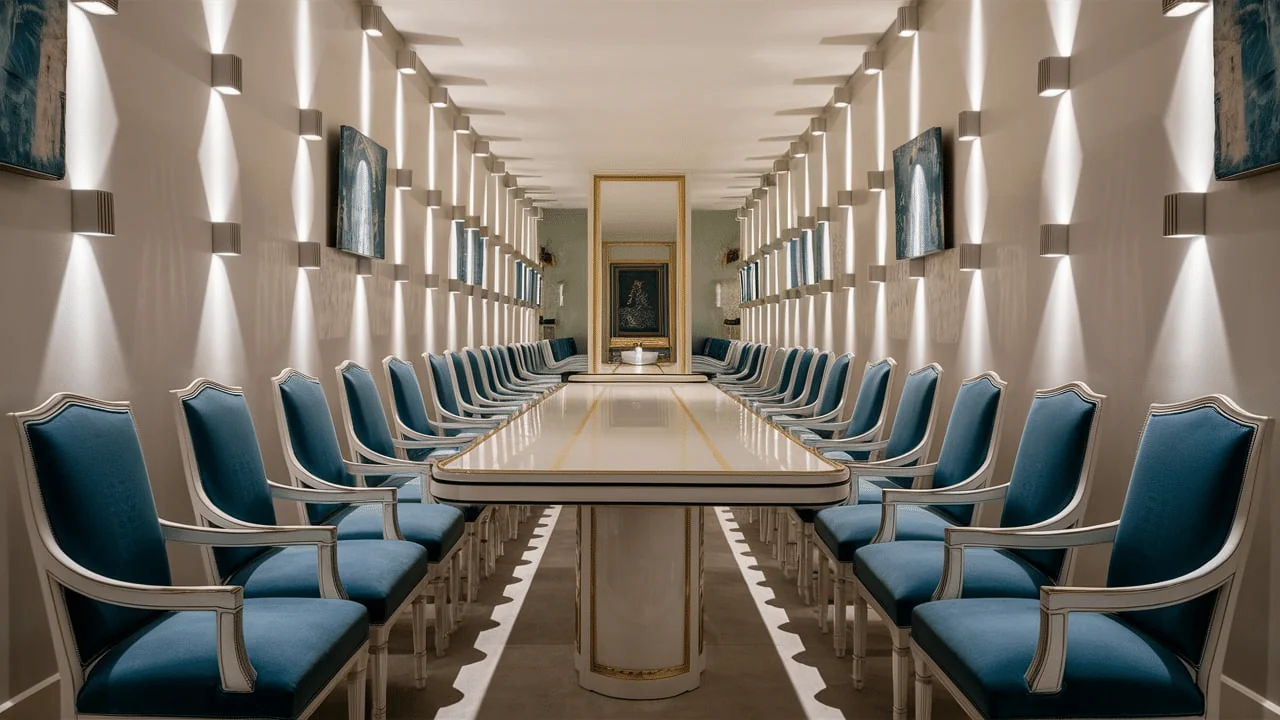
Creating symmetrical balance might sound hard, but it’s actually very easy. You need to pay attention to where things go and make sure both sides of the space feel even. How to do it step by step:
1. Pick a Focal Point
Start by choosing one main item in the room. This is called your focal point. It’s the thing your eyes are drawn to first.
-
In a living room, it might be the sofa or fireplace.
-
In a bedroom, it’s often the bed.
-
In a dining room, it’s usually the table.
-
In a kitchen, it could be the stove or island.
Place this item in the center of the wall or room. It becomes the base for your symmetrical layout.
2. Build Around the Center
Once your focal point is in place, you can start building balance around it. Place similar or matching items on both sides.
Examples:
-
In a bedroom, add a nightstand and a lamp on each side of the bed.
-
In a living room, put a chair on each side of the sofa.
-
On a console table, place two matching vases—one at each end.
These “pairs” help keep things even and pleasing to the eye.
3. Use Pairs and Repetition
Using items in pairs is one of the easiest ways to create symmetry.
What to pair:
-
Lamps
-
Chairs
-
Pillows
-
Shelves
-
Wall art
-
Plants
Try to place them at the same height and distance from the center. They don’t have to be exactly the same, but they should feel equal in size and style.
4. Balance with Shape and Size
Symmetry is not only about matching items. You can also balance different things by using shapes and sizes that feel equal.
For example:
-
One big floor lamp can balance two smaller table lamps.
-
A large framed picture on one side can match the size of a mirror on the other.
Even if the items are different, their visual weight can still feel the same. That’s what makes it balanced.
5. Keep Colors and Textures Even
Colors help keep your room looking balanced. Try to repeat the same color on both sides of the space.
Simple ways to do this:
-
Add the same colored pillow to each end of your couch.
-
Use a rug that ties the room together with colors from both sides.
-
Match the finish or fabric on furniture, like wood tones or linen covers.
Textures also matter. If one side has a soft blanket or fluffy pillow, try something with a similar feel on the other side.
6. Use Matching Wall Decor
Wall art can make or break the look of symmetry. Try hanging art in a balanced way.
Ideas:
-
Two identical frames hung side-by-side.
-
A large, centered piece with matching wall sconces on each side.
-
Floating shelves with the same number of items on each.
Keep spacing equal so everything lines up nicely.
7. Keep It Centered and Aligned
Always double-check the layout. Step back and look at the whole room. Make sure:
-
Items are lined up across the center point.
-
Nothing is leaning too far in one direction.
-
There’s enough space on both sides of large furniture.
Using painter’s tape or a measuring tape can help keep things straight while arranging.
8. Make Small Adjustments
Don’t worry if it doesn’t look perfect at first. Move things around until they feel right.
Sometimes, even small changes—like sliding a chair over a few inches or adding a small vase—can make a big difference in balance.
Common Places to Use Symmetrical Balance
Living Room
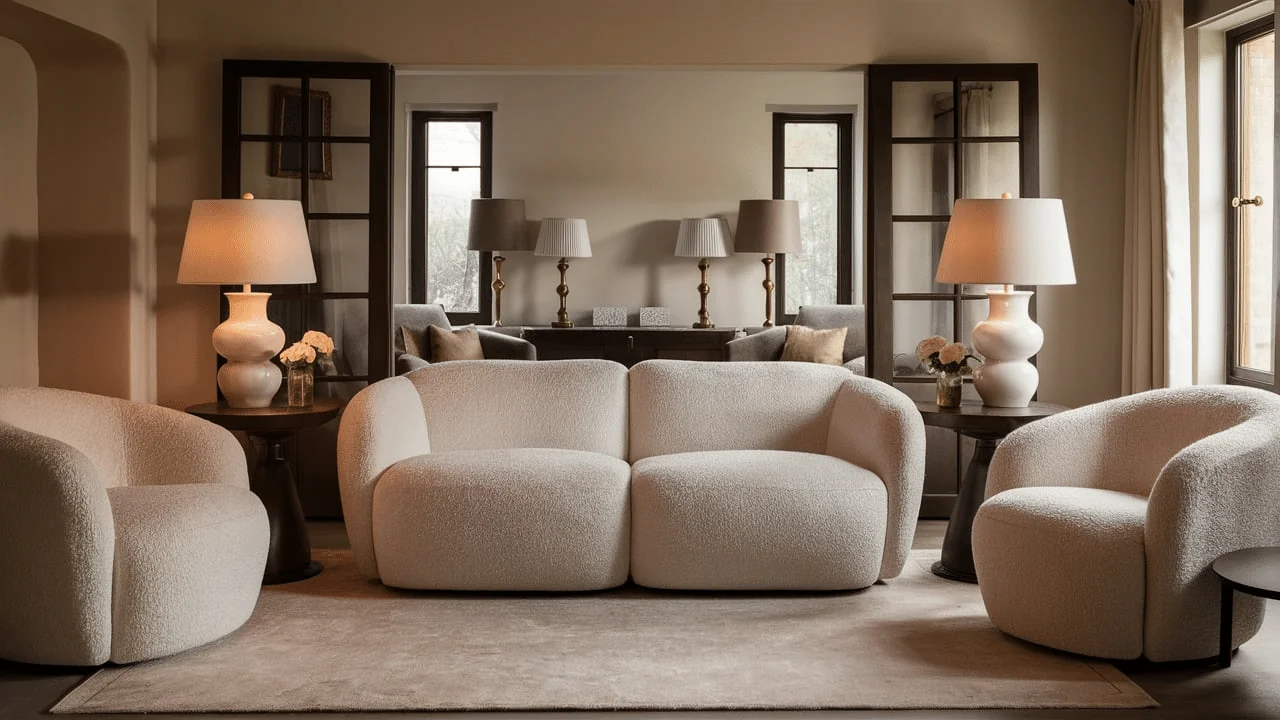
Place a sofa in the middle of the wall and add a side table and lamp on each side. Or place two chairs across from the sofa with a coffee table in the middle. This creates a space that feels open and balanced.
Bedroom
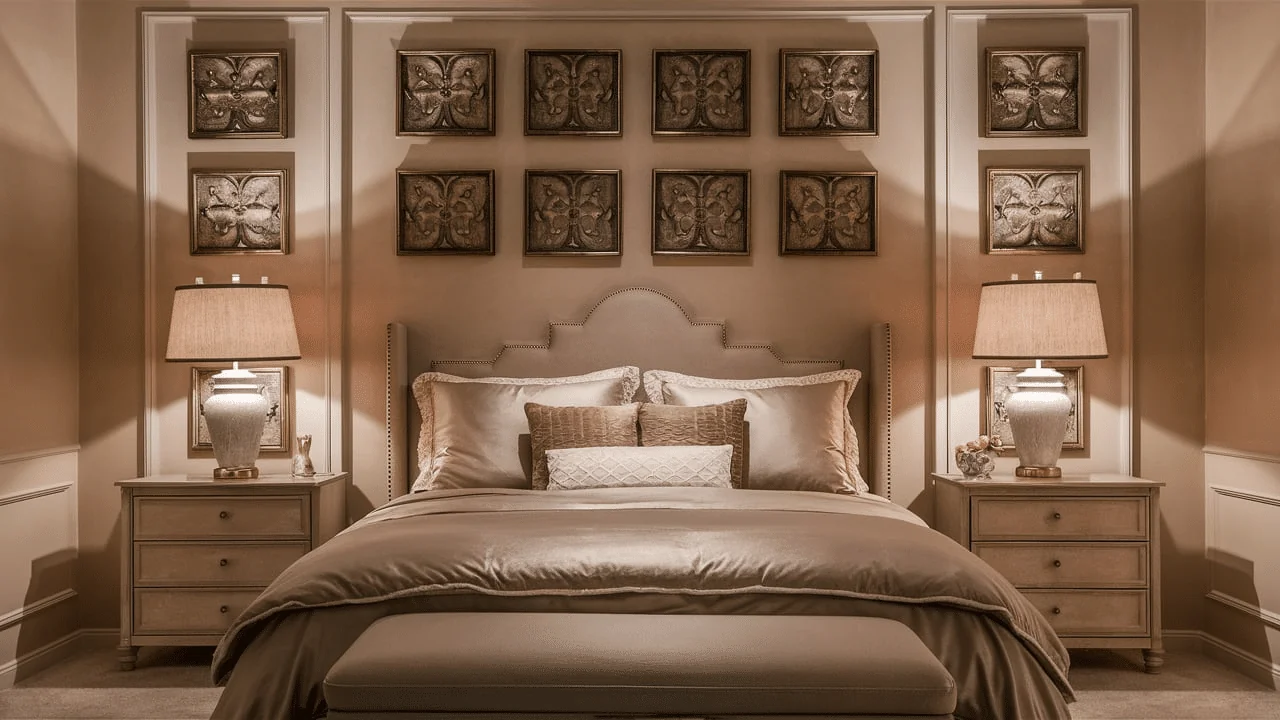
Symmetry in the bedroom is very common. Put the bed in the center of a wall. Add matching nightstands and lamps on each side. You can also use matching pillows, art, or wall lights to keep the space feeling even.
Dining Room
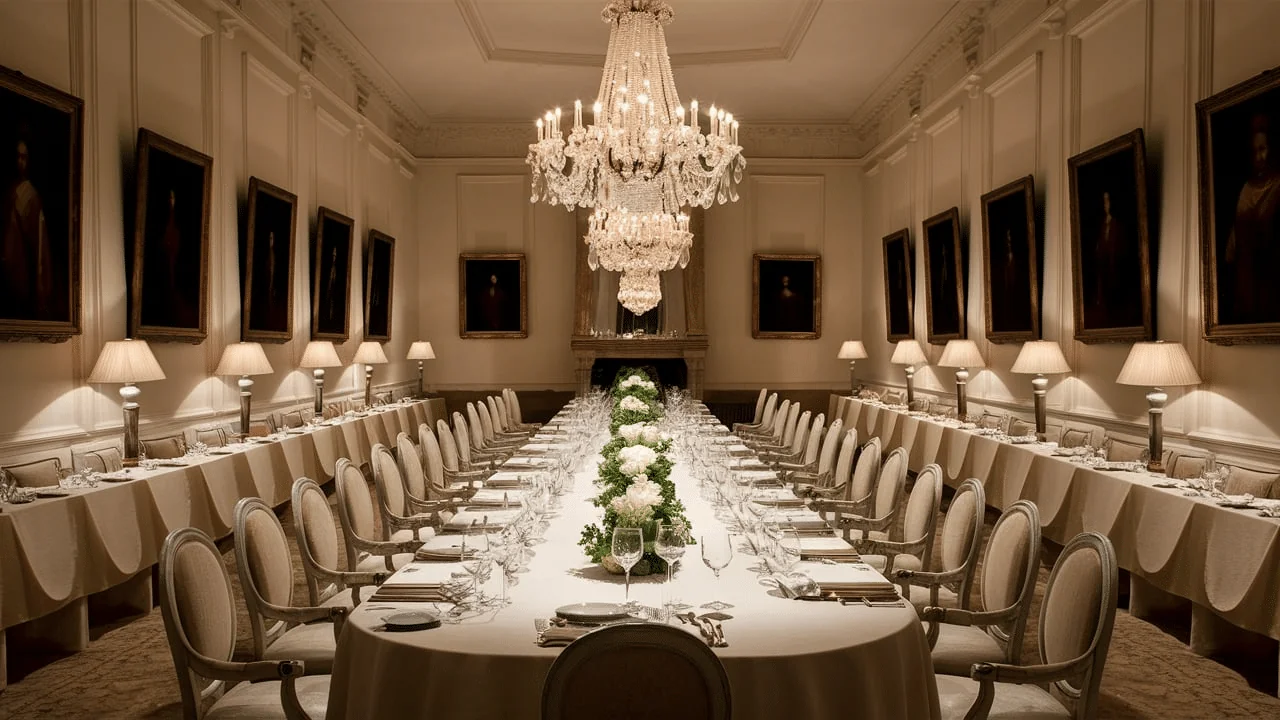
Put a long table in the center of the room with the same number of chairs on each side. Add a light fixture in the middle and maybe matching art or shelves on the side walls.
Kitchen
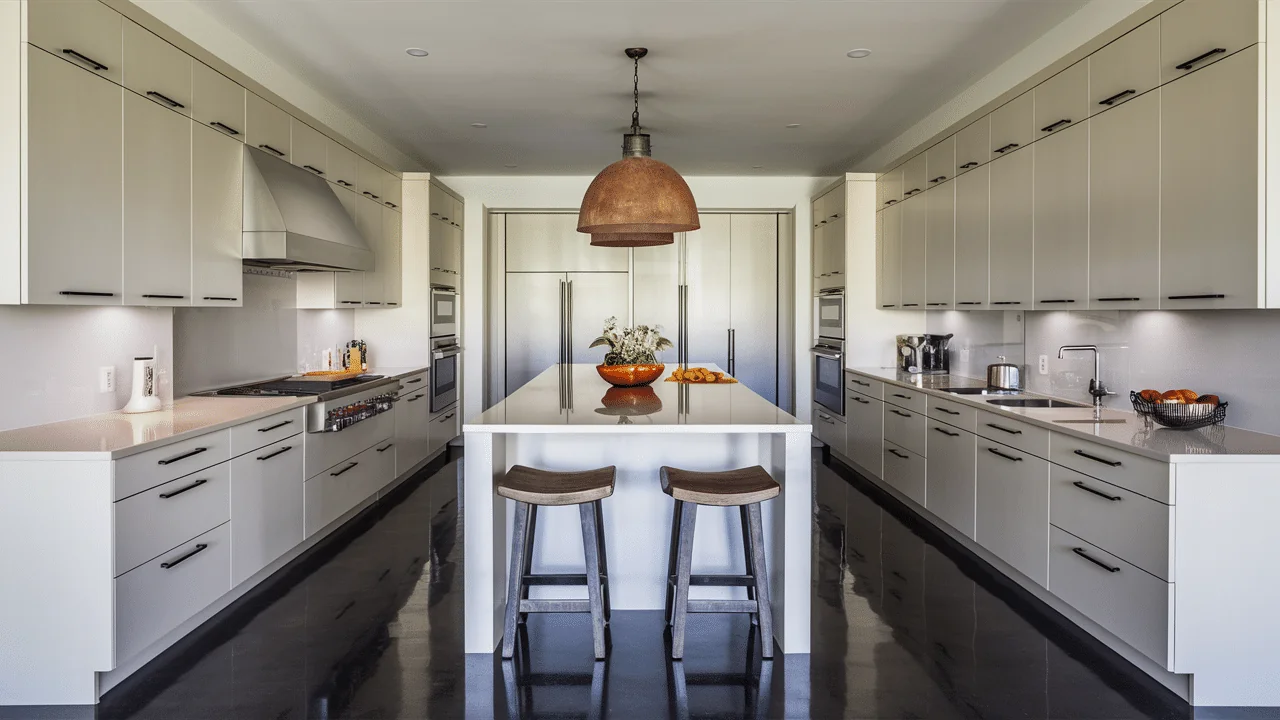
In kitchens, symmetry is often seen in the layout. Cabinets on both sides of the stove, matching lights above an island, or a centered range hood. Even open shelves can be placed in a balanced way.
Bathroom
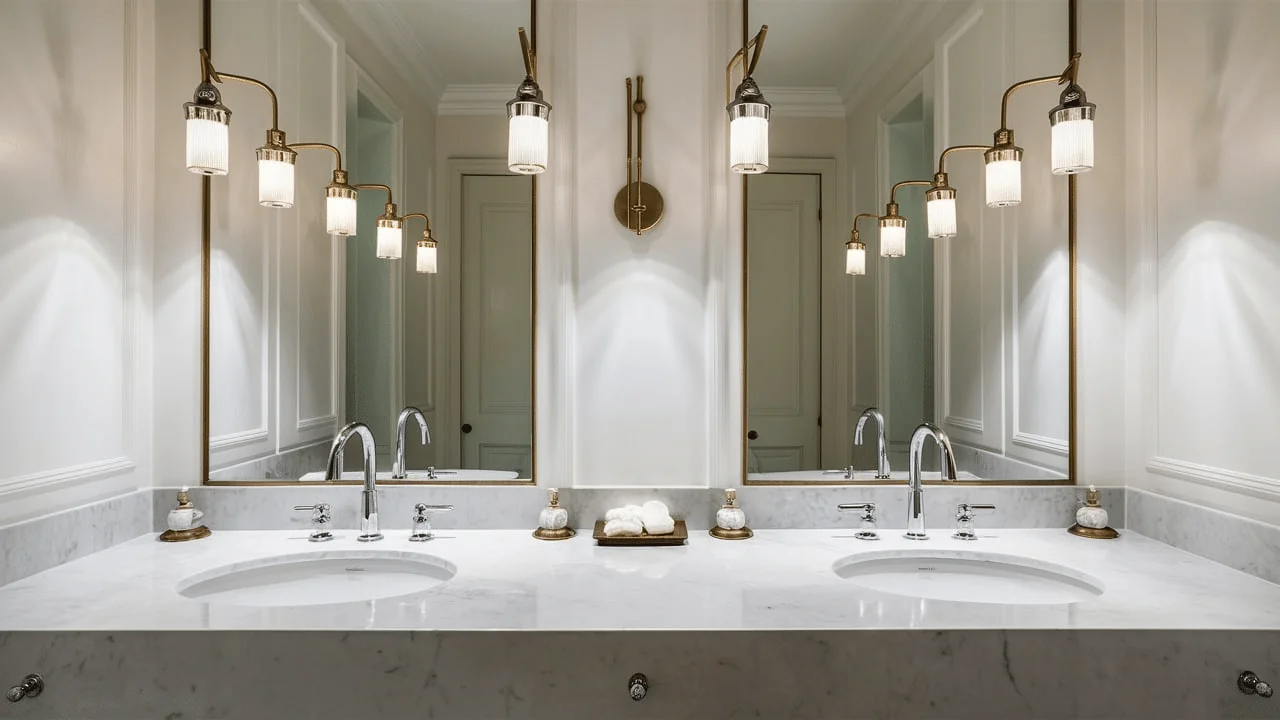
Use double sinks with matching mirrors and lights above. Place items like soap, towels, and toothbrush holders in a balanced layout.
Symmetry in Different Design Styles
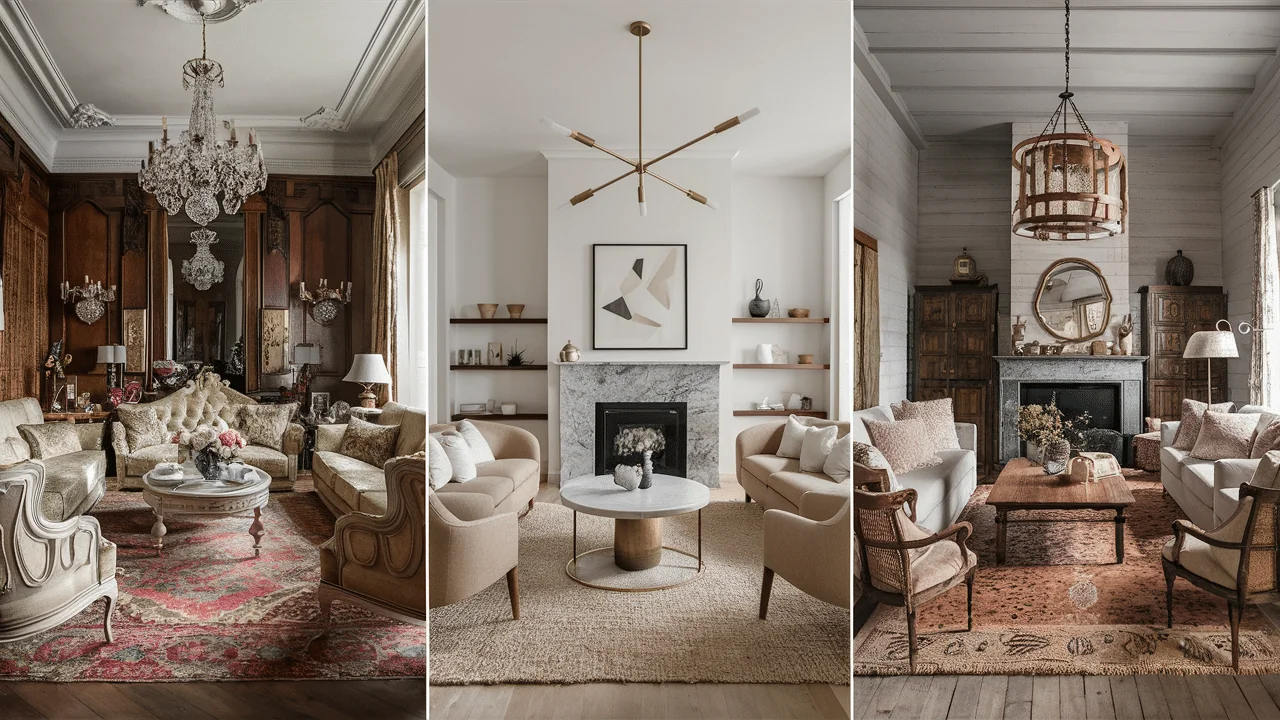
Symmetry works with many styles.
1. Traditional Style: Symmetry is a key part of traditional rooms. Think formal dining rooms, elegant bedrooms, and classic living rooms. Everything is neat, clean, and matched.
2. Modern Style: Even modern spaces use symmetry. A centered sofa with two modern chairs, clean lines, and balanced colors can still feel fresh and up-to-date.
3. Farmhouse Style: Use a centered bed, matching lamps, and cozy blankets in soft colors. Farmhouse symmetry is more relaxed but still balanced.
4. Minimalist Style: Minimal rooms often use symmetry to stay simple. A few clean lines, soft colors, and even layouts create a peaceful, tidy space.
How Symmetry Affects Mood
Symmetry doesn’t just make a room look good—it also helps you feel better in the space. It makes rooms feel:
-
Calm: Because our brains understand it quickly
-
Safe: Because we know what to expect
-
Happy: Because it pleases the eye
A balanced room can help lower stress. It can also make it easier to focus, rest, or even work.
Tips for Using Symmetry Without Making It Too Perfect
Sometimes, symmetry can feel a little stiff or too formal. How to keep it warm and natural:
-
Mix Materials: Use the same layout but try mixing textures. A wood nightstand on one side and a painted one on the other can still look balanced if they’re the same size.
-
Add Plants or Art: Place matching plants on both sides of a window or hang two pieces of art that are different but close in size and color.
-
Use Odd Numbers Inside Symmetry: Add a stack of three books on each side table or three throw pillows on both ends of a sofa.
Mistakes to Avoid
- Forcing It in Small Spaces: If your room is tiny, don’t try to fit in too many pairs. Use a simpler layout. One side table instead of two can still work if the visual weight is balanced.
- Matching Everything: Your home shouldn’t feel like a catalog. It’s okay if your lamps or chairs don’t match perfectly. Close is good enough if they balance the space.
- Ignoring Scale: Two small chairs won’t balance a big sofa. Make sure your items feel even in size, even if they aren’t exact matches.
Simple Symmetry Ideas You Can Try Today
-
Place two matching pillows on each end of your sofa.
-
Add two lamps to your nightstands.
-
Hang two frames side-by-side over your bed.
-
Set two chairs across from your couch with a coffee table in between.
-
Place the same plant or vase on each side of a shelf.
Conclusion
Creating symmetrical balance in a room is simple. Start with a focal point, use matching items, and keep colors and shapes balanced. Symmetry brings order and harmony, making any space feel calm and organized.
It’s not about having everything the same, but about making both sides feel equal. Small changes, like matching pillows or adjusting lamp placement, can make a big difference.
Symmetry helps spaces feel peaceful and easy to navigate. With a few simple tips and some attention to detail, you can turn any room into a balanced and beautiful space. Start small and adjust as needed, and soon your home will feel more in tune.

